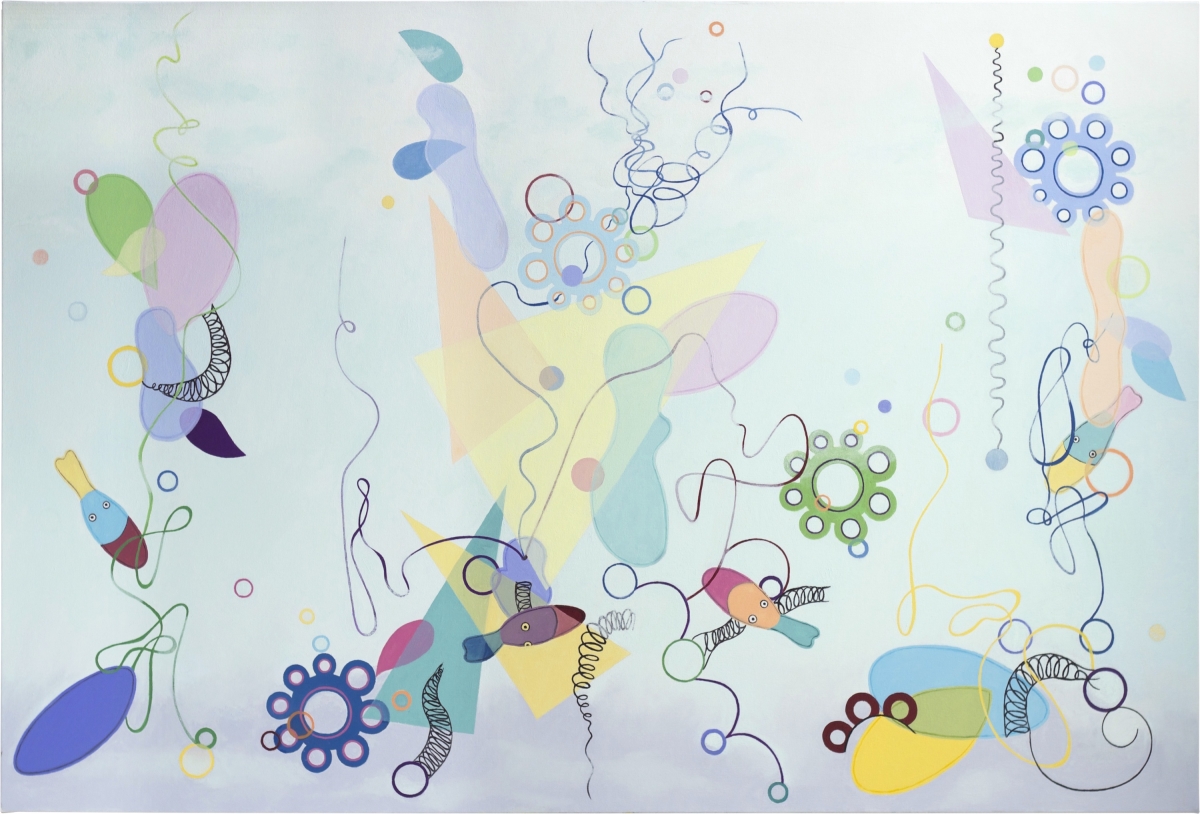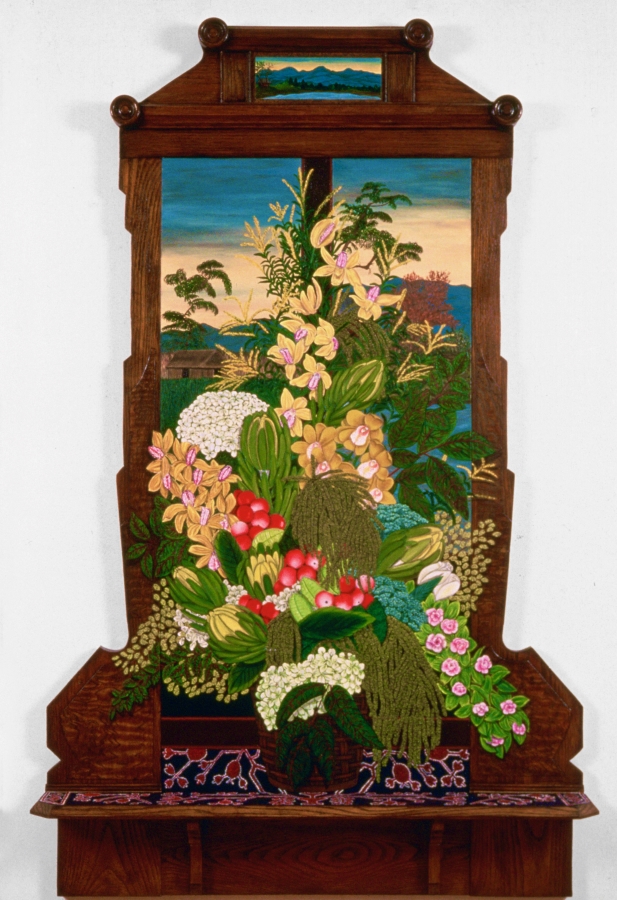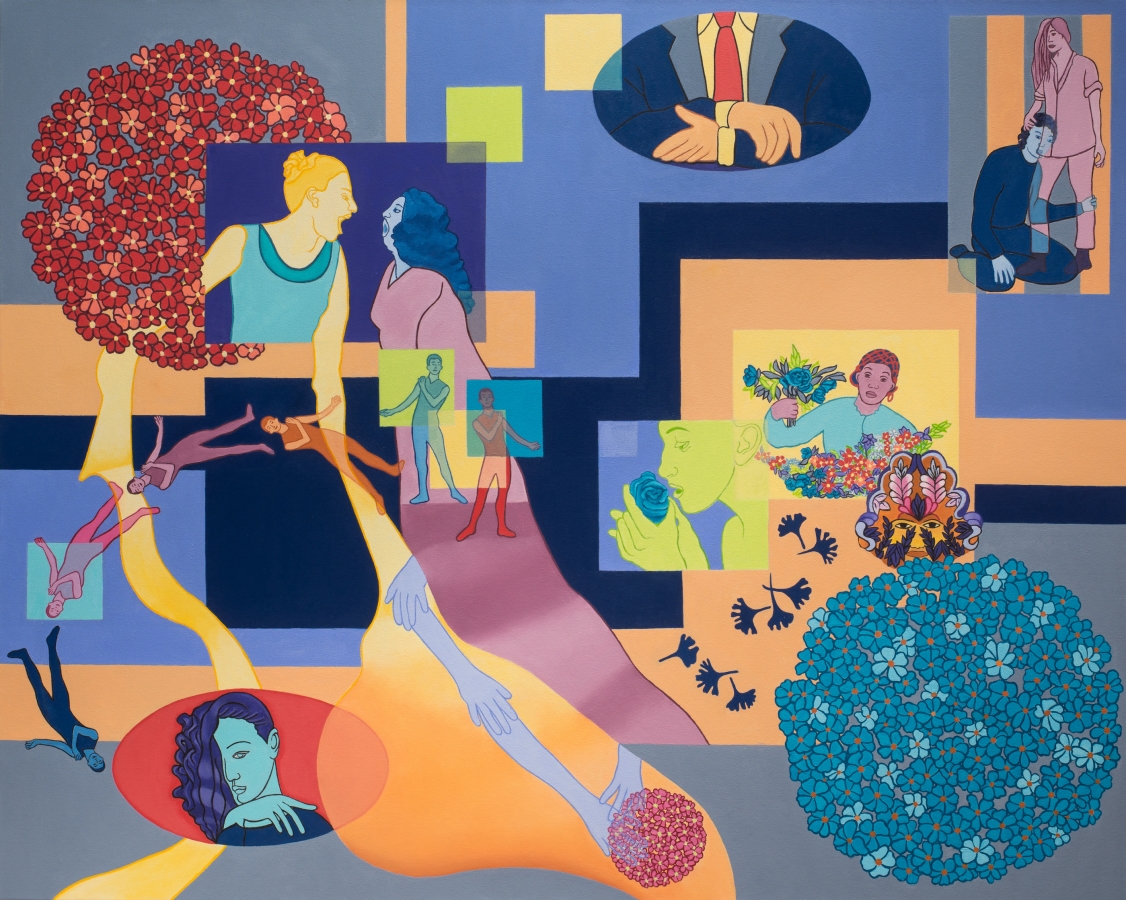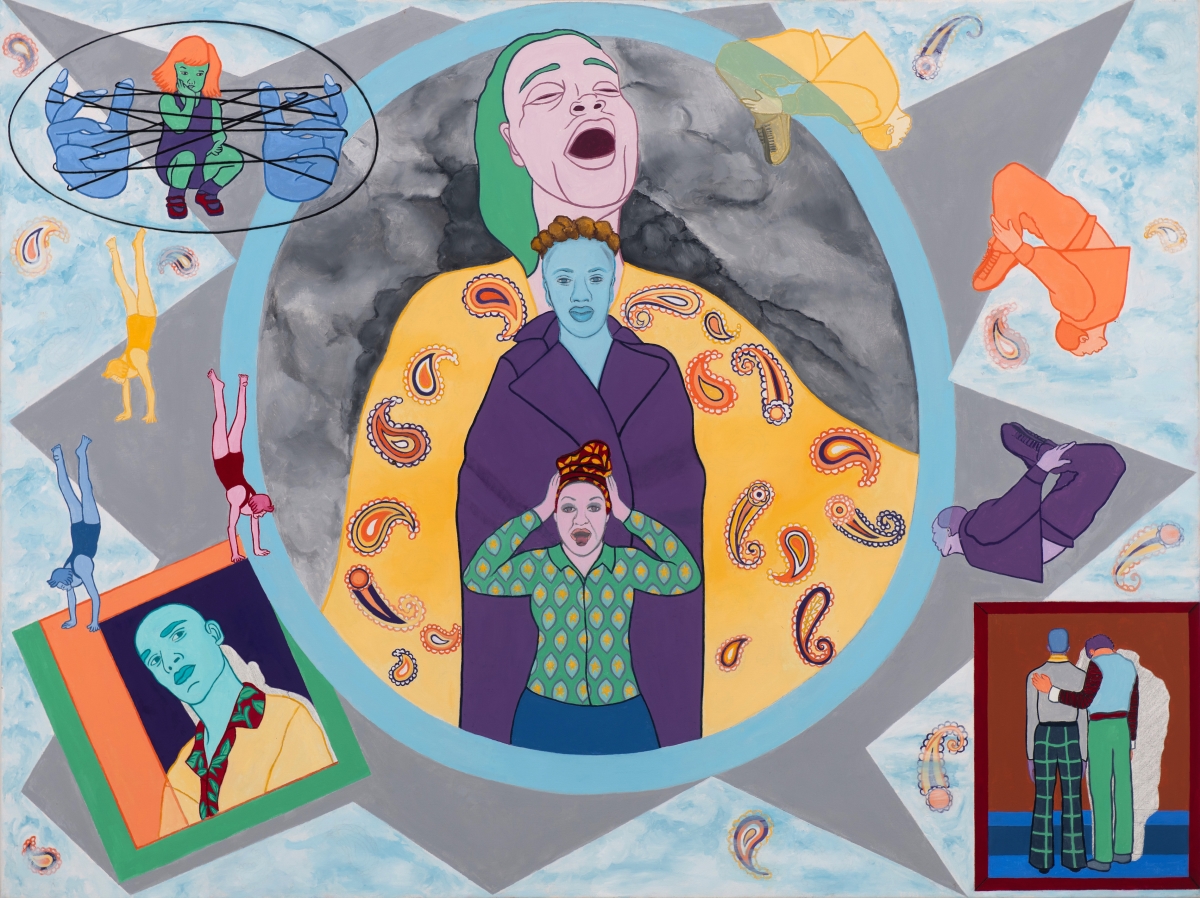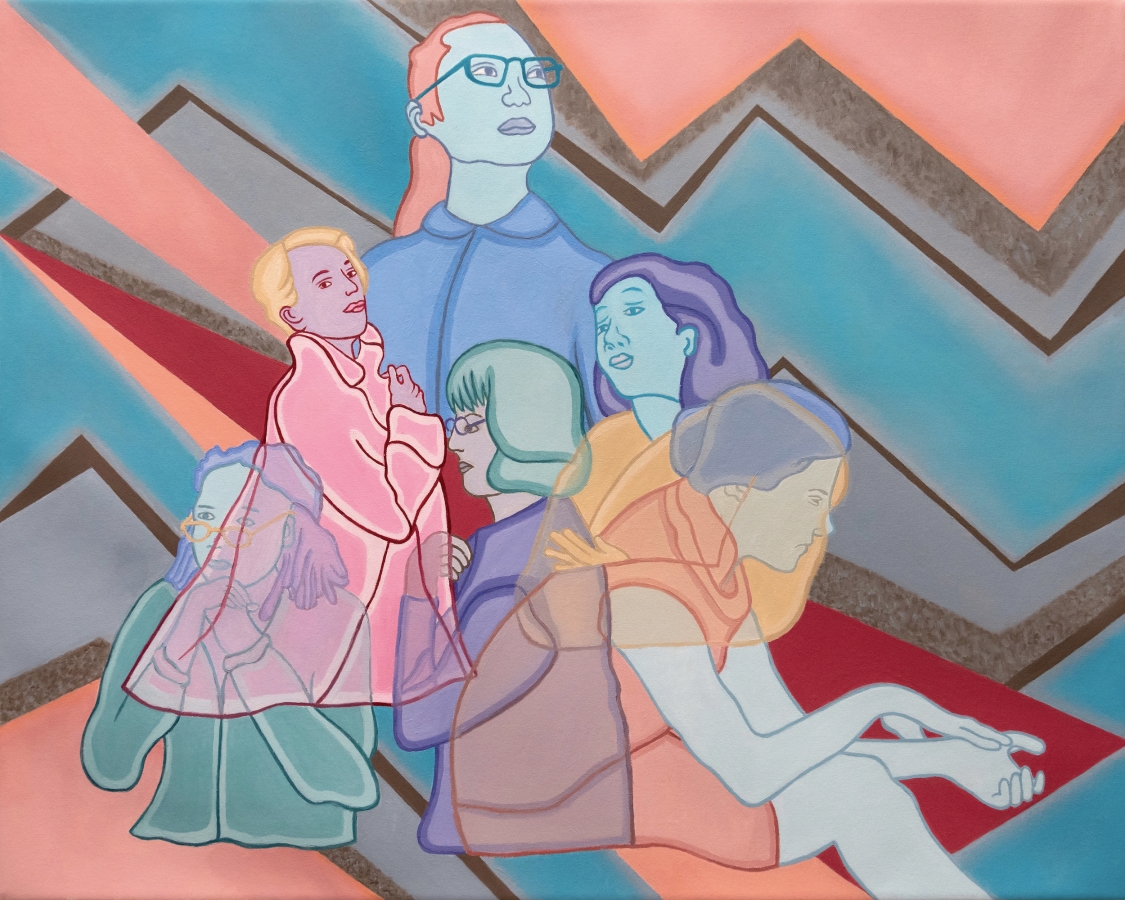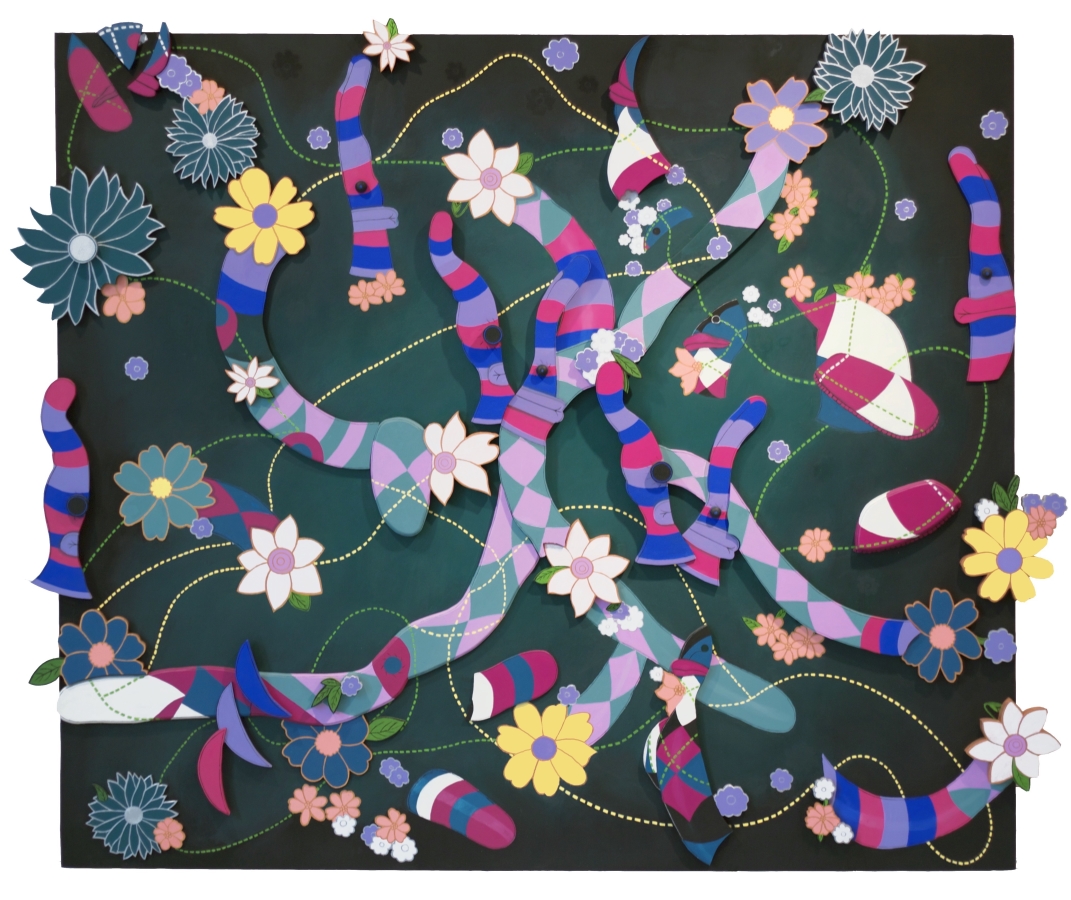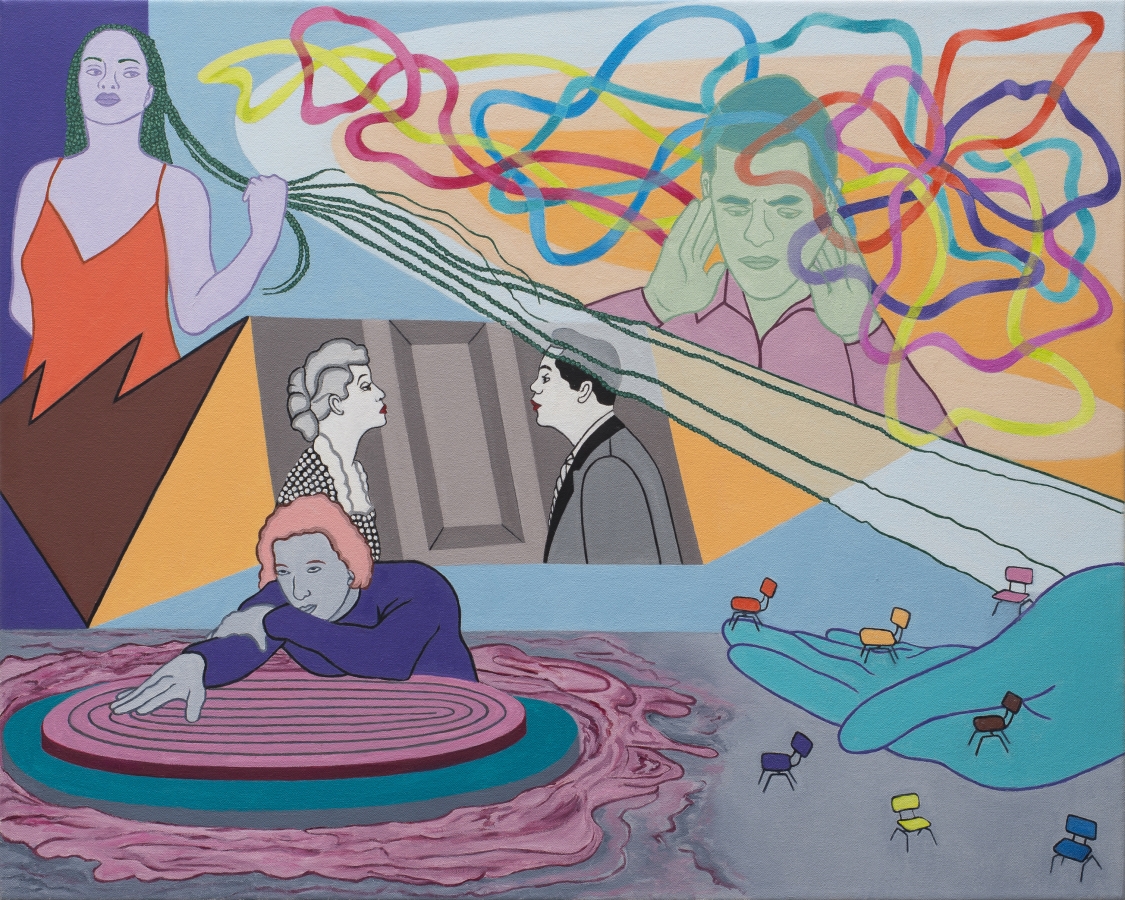
INTERVIEW
Artist: Carolyn Oberst
What is your strongest childhood memory?
Growing up in Philadelphia, PA, we were close to the New Jersey shore. When I was a child, we spent every summer at the beach. My strongest memories are of the smell of the salt air and the sound of the waves, of days spending so much time in the ocean that my fingers would crease and my lips would turn blue from being in the cool water so long. Sandcastles, sand horses, being buried in the sand, running on the beach, sea gulls in the air, the taste of salt water, sand in my hair. There was always a sense of joy and freedom. Because of these early memories, the ocean, and its adjoining beach, wherever in the world I’ve found it, has always meant a lot to me.
Who was your mentor and what is the most important thing you’ve learned from them?
I studied drawing at the Art Students League in New York City with a man named Marshall Glasier. He studied with George Grosz and was an acknowledged master teacher.
When I started studying with him, he was already in this 70’s and he has since passed. He taught life drawing in a very unusual way. We drew on large Masonite boards that held wide rolls of paper, so that each drawing was 48 x 96 inches, larger than life size. You had to stand up to draw that large, and your whole body became engaged with the process. I’m small, so for me I had to reach up very high to draw the head and bend down low for feet at the bottom. It was a very physical act. I found the technique completely engaging and invigorating. It allowed you to feel completely at one with the figures you were drawing, the setting they were in, and all the details in front of you. It also made it easy to see where you were off and what was not working. Mistakes were large.
I learned (from him) that making art is a totally immersive experience. Even if you’re not working large, it engages all of you when you are concentrated on what you are creating. This technique that he developed not only allowed you to learn to draw well, but also taught you what it means to be engaged with the process of making art.
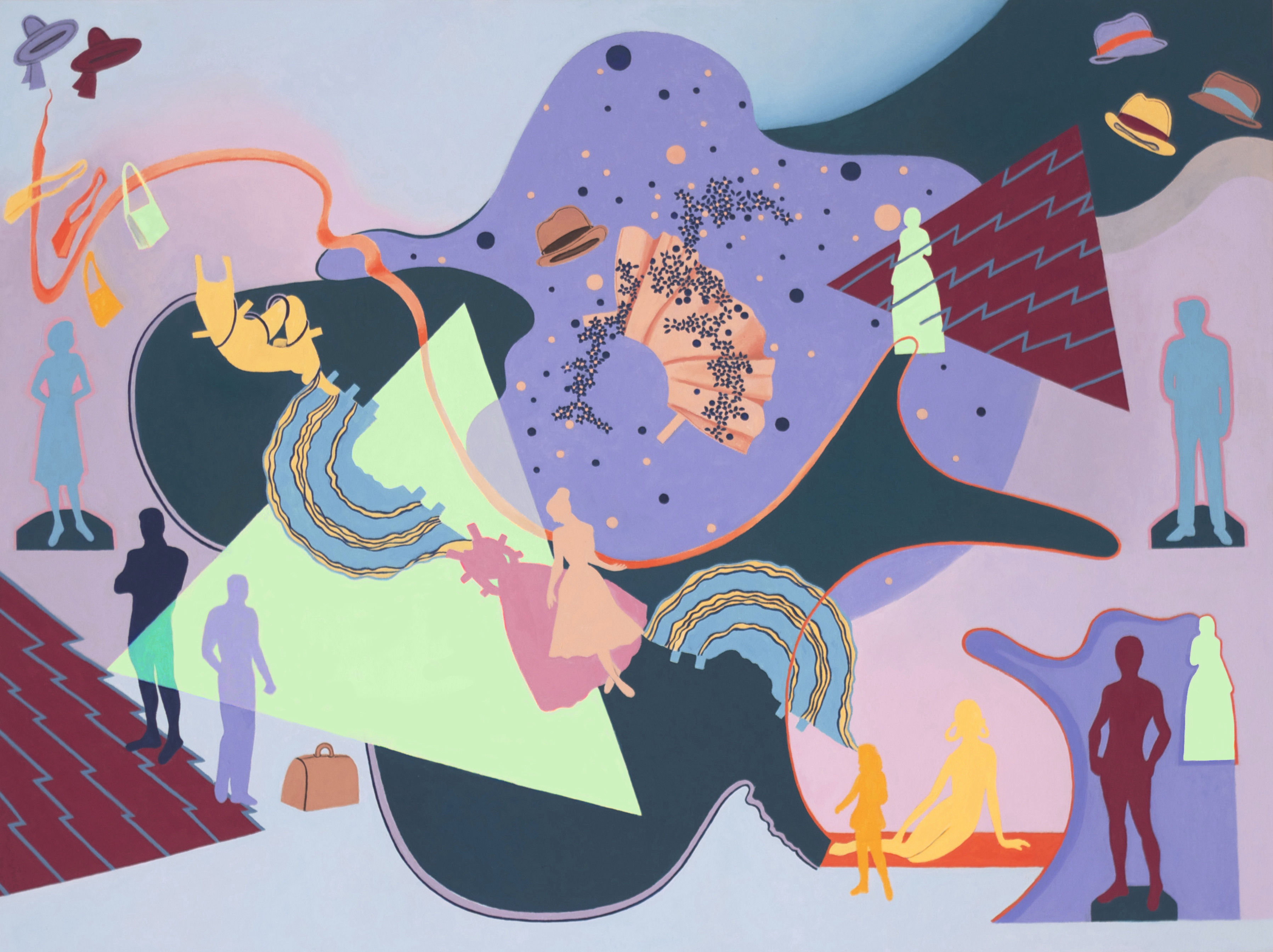
How and when did you adopt your style and medium?
When I first came to NYC, I became involved in the fashion industry designing and manufacturing my own line of women’s clothing. Dissatisfied with commercially produced fabrics, I learned a technique for hand-painting natural fiber fabrics such as silk and cotton. As soon as I started working with a brush, something happened. I fell in love with painting. I realized using a brush to move color, create line, shapes, and space, would allow me to fully express myself without the limitations innate to designing. A lightbulb went off!
Despite the success of my hand-painted fashion, I decided to close my business and study life drawing and painting full time. When I started making paintings on my own, I found that some things from my design practice stayed with me, my sense of color, love of line and shape. I always preferred crisp lines and clarity, which seems what I am innately drawn to and has been there from the beginning. So, my paintings tend to be crisp and clear, using the accumulation of detail and transparency to add complications.
My love of color is what drew me to oil paint. Although I have worked with acrylics and other water-based materials, I find that none of them allow for the richness and depth of color one gets with oils. I used oil paint when I was creating wood relief paintings, and I use them now for my works on stretched canvas. I’ve also used them to paint directly on paper and have found that they not only provide beautiful color, but they are also adaptable to various grounds.
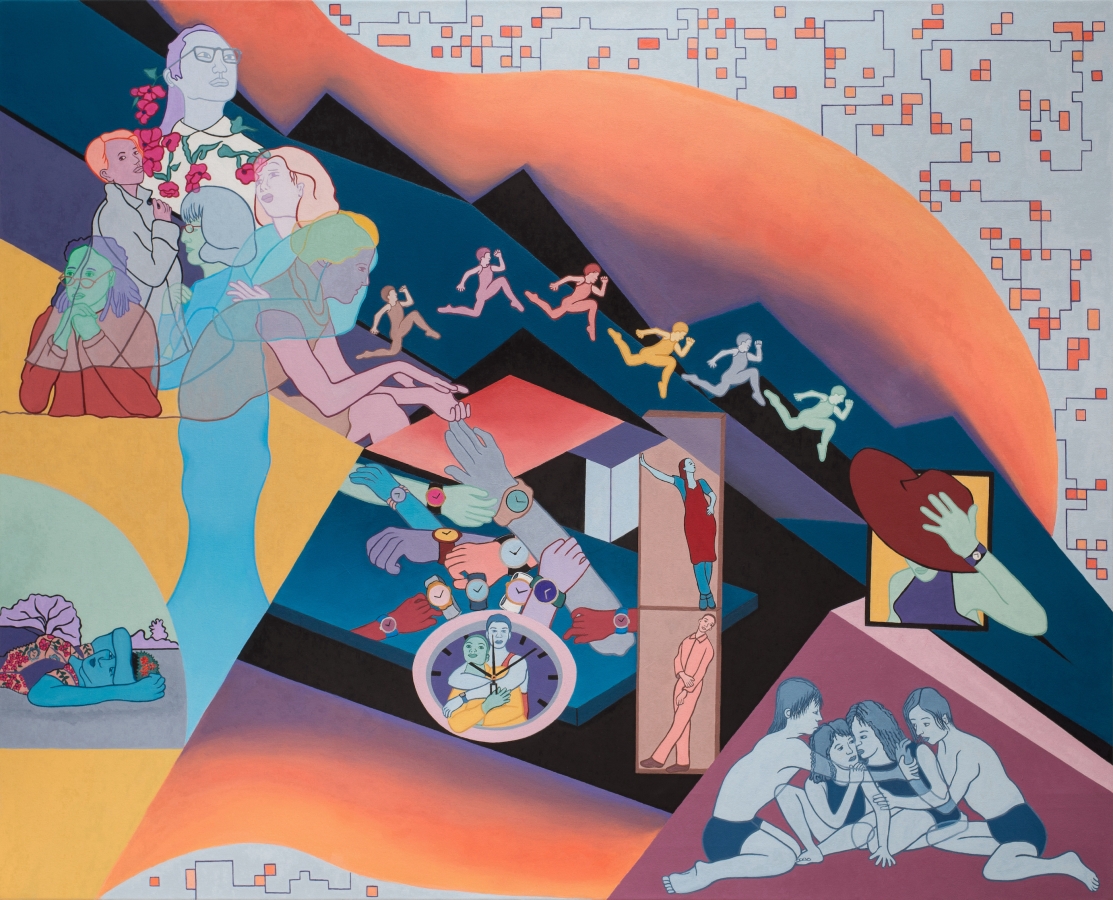
What does a typical day look like for you both in life and in art?
For the well-being of my body and mind, and to support my artistic life, I practiced and taught yoga for many years. While I’m no longer teaching, I prefer to do my practice in the morning first, eat breakfast and then get into the studio. I feel that it’s important to try and work in the studio every day. However, even if I’m not physically in the studio, whatever I’m working on, or thoughts that come about future work, stay with me.
My current work is partially based on images gleaned from the contemporary culture around me, so I’m always on the lookout for imagery that speaks to me somehow. This is part of what keeps my life and my art intertwined. If I’m away from the studio, I’ll make a note on my phone when an idea strikes me. I also take photos for visual inspiration.
I usually work for about 4 hours, take a lunch break, check emails for about an hour, then go back in the studio and work until around 6:30-7:00 when I meet up with my husband for dinner. After dinner I go back into the studio for another 2 hours or so, finishing around 10. In the summer months, I also swim and spend time gardening at my part-time home in upstate New York.
Being physically active with both yoga and swimming and spending time in nature are beneficial to both my life and my art. For me, working in the studio is at times akin to a spiritual experience. I need to be in deep concentration when I am working to create the intensely detailed kind of work I do.
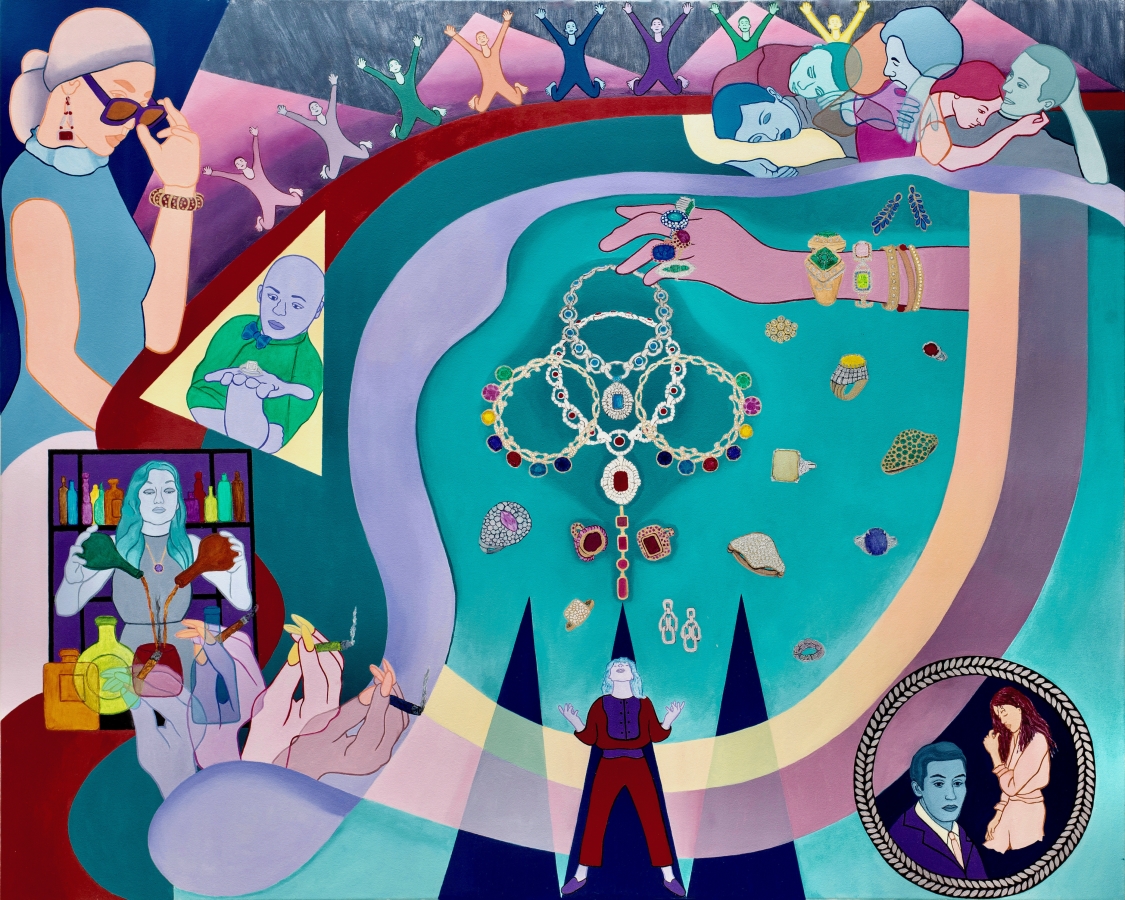
How long does it typically take to create a painting?
The length of time it takes to create a painting depends on the size and how complicated it is. The larger and more complicated paintings can take about 3 months to do. Smaller ones will obviously take less time, about 1 month. Works on paper and small paintings can go much faster. It varies.
What are the main ingredients for a good painting?
What I look for are images that hold my attention. Paintings that take time to fully see, work that allows for introspection, contemplation, and that can suggest different ideas, thoughts and/or feelings every time you look at it. I’m very partial to color, and while there are wonderful paintings that are simply black and white or very muted in their palette, interesting color is a key ingredient for a good painting.
I like work that sticks with you, that gives you something to think about, that elicits various feelings or emotions. Work that you might think about even after you’re not looking at the painting anymore. Thought-provoking and suggestive work.
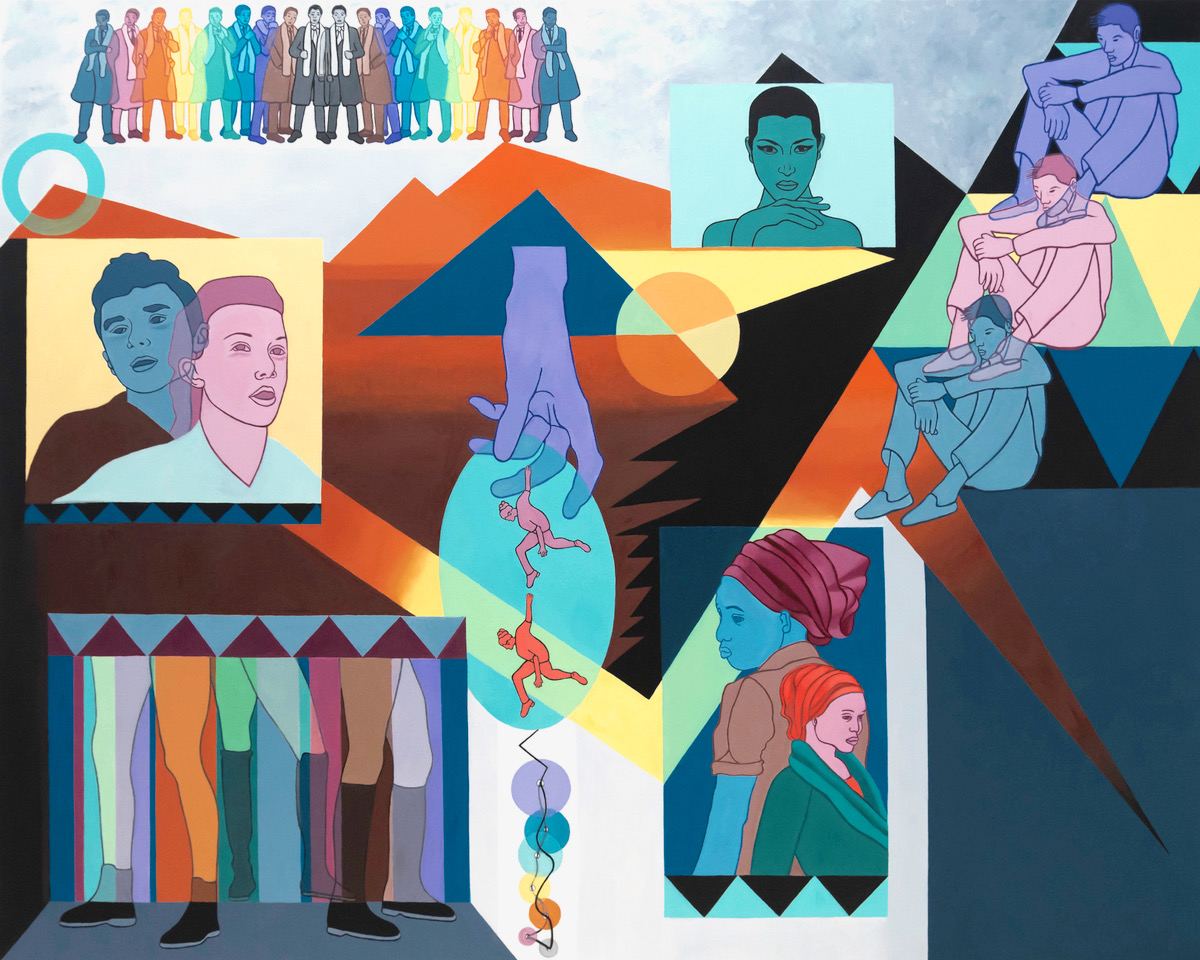
What is the most indispensable item in your studio practice?
My brushes. I use a certain brand and type that are not available in stores. They must be ordered online and quite frequently sell out, so I have to plan ahead.
What is the best and worst advice you ever received in your art career?
Best advice – To study drawing with Marshal Glasier by an artist friend who had been his student. Worst advice – I can’t think of any.
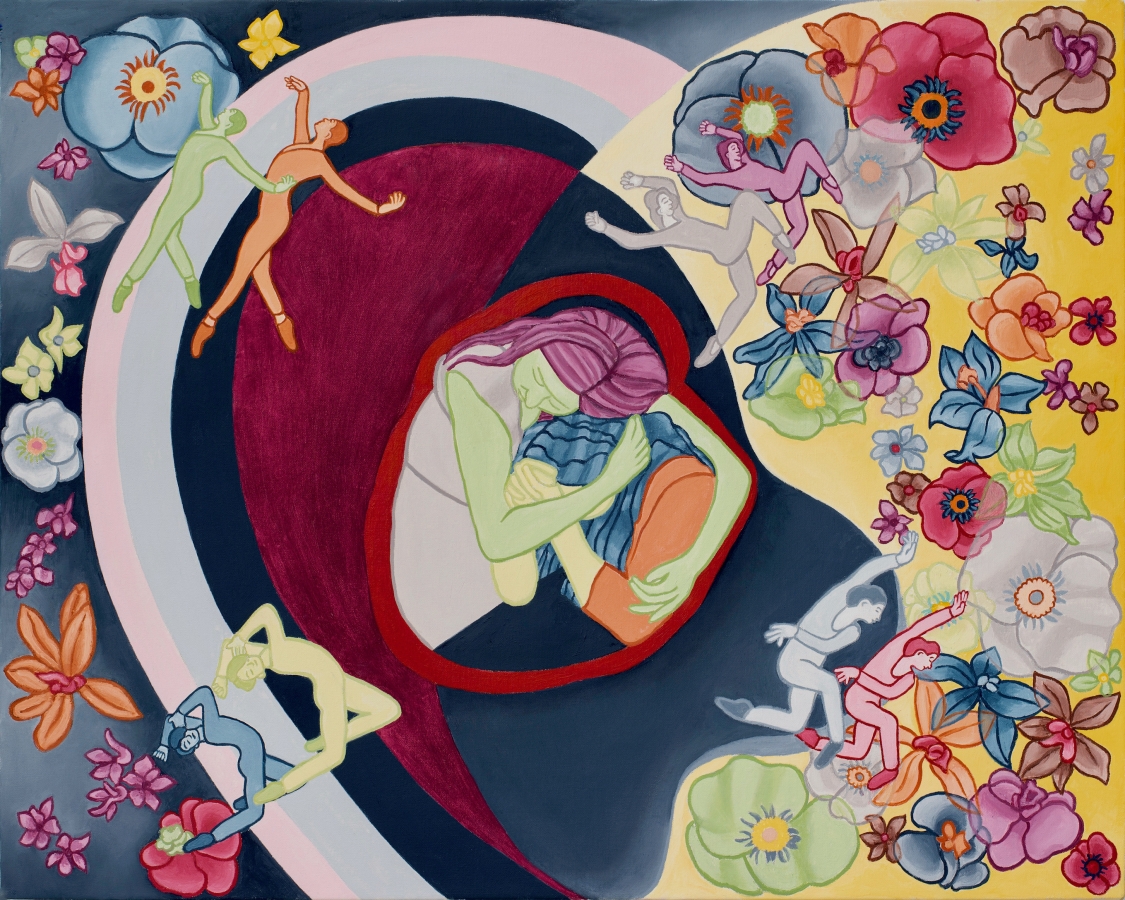
What is a book that you would recommend others read?
The Secret Lives of Color by Kassia St. Clair.
Your favorite quote is….
I have two favorite quotes. One is from the drawing teacher I mentioned above, who used to say, “The hand has a mind of its own.”
Which meant that he wanted you to let your hand take over and flow, allowing your conscious mind to recede into the background, letting your subconscious take the lead when drawing.
For me this applies not only to the drawing and construction of the painting but to the choice of color and subject as well. I try not to let my rational conscious mind determine how I choose, but to get into the same state that he was referring to in the quote and allow my subconscious to lead the way. The invaluable knowledge of how to do this has guided me throughout all my artmaking over the years.
My other favorite quote is from the artist, Mike Kelly, “It’s important to be sensitive to the life force of the painting.”
This is exactly what I try and do. When I’m working, I sense that the painting takes on a life of its own and my job is to allow the painting to become what it wants to be, sometimes with very surprising results. This is part of the excitement and interest for me in making art. Each work of art is its own journey.
Editor: Lisa Portscher
